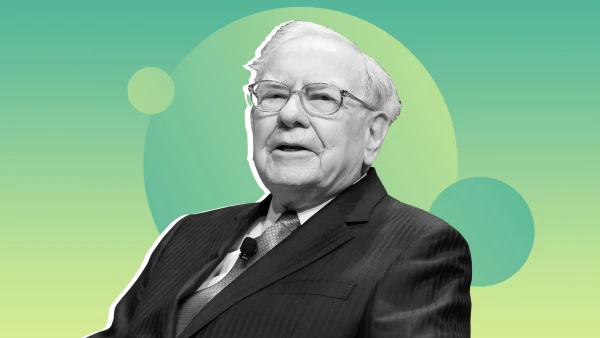
Understanding the Basics
First things first, let’s get down to the nitty-gritty of what this whole financial game is about. It’s like trying to navigate a store with no price tags – confusing, frustrating, and you end up buying way too many things you don’t need. So, before we dive headfirst into the deep end of investment options and budget breakdowns, we gotta set the stage and understand the basics.
Imagine financial literacy as your secret weapon in this money maze. The more you know, the smoother the ride. As the brilliant Warren Buffett once said, “Risk comes from not knowing what you’re doing.” So, think of this as your crash course in money language – from assets to liabilities, from compound interest to diversification. It’s like learning to decode a treasure map, but instead of gold, you’re hunting for financial stability.
Setting Financial Goals
So, you’ve decided it’s time to get your financial ducks in a row. Setting financial goals may sound like something only serious adults in suits do, but let me assure you, it’s all about making your money work for you so you can live your best life. Picture this: you lounging on a tropical beach, sipping a cocktail, without a care in the world because you’ve got your finances on lockdown. Sounds dreamy, right?
First things first, determine what you want to achieve with your money. Whether it’s saving up for that epic trip to Machu Picchu or finally buying that designer handbag you’ve been eyeing, setting specific and achievable goals will keep you motivated. As the wise Warren Buffett once said, “The best investment you can make is in yourself.” So go ahead, dream big, set those financial goals, and watch your bank account flourish.
Creating a Budget
Budgeting – it’s like a game of financial Tetris, where you try to fit income and expenses together in the most satisfying way possible. Think of it as your money’s GPS, guiding you through the twists and turns of daily expenses without veering off course.
When it comes to creating a budget, start by channeling your inner detective. Sherlock Holmes once said, “It is a capital mistake to theorize before one has data.” So, grab those bank statements and receipts, put on your metaphorical deerstalker hat, and uncover where your money is really going. It’s like solving a mystery, but instead of a hidden treasure, you might find out you’re spending a little too much on avocado toast or impulse Amazon purchases.
So remember, budgeting doesn’t have to be a dull task. It’s your chance to take charge of your financial narrative and turn those numbers into a story of empowerment and control. In the end, budgeting isn’t just about numbers – it’s about creating a roadmap to financial freedom and peace of mind.
Building an Emergency Fund
When it comes to building an emergency fund, it’s all about being prepared for life’s unexpected curveballs. Whether it’s a sudden car repair, a medical emergency, or an unforeseen job loss, having a financial cushion can provide peace of mind in times of uncertainty. As the saying goes, “By failing to prepare, you are preparing to fail.” So, why not take a proactive approach to your finances and start squirreling away some nuts for a rainy day?
Creating your emergency fund may seem daunting at first, but remember, every little bit counts. Start small and gradually build up your savings over time. Consider setting aside a certain percentage of your income each month until you reach your goal. As financial guru Dave Ramsey wisely puts it, “An emergency fund is your financial safety net – it’s not a matter of ‘if’ an emergency will happen, but ‘when’.” So, embrace the journey of saving and watch your emergency fund grow like a resilient little money tree, ready to weather any financial storm that comes your way.
Exploring Investment Options
When it comes to exploring investment options, it’s like stepping into a buffet of financial choices. It’s not just about choosing between stocks and bonds; it’s about finding that perfect blend of risk and reward that suits your taste buds. As the legendary investor Warren Buffett once said, “Risk comes from not knowing what you’re doing.” So, let’s dive into this colorful investment palette with a curious mind and a sprinkle of savvy.
Diversification is key, like combining different ingredients to create a delicious dish. As the renowned economist Burton Malkiel put it, “A smart investor knows that there is no free lunch.” So, spread your investment platter with a mix of stocks, bonds, real estate, and maybe even a dash of cryptocurrency for that extra zing. Remember, just like a well-balanced meal, a diverse portfolio can help cushion the impact of market fluctuations and keep your financial feast flavorful.
Diversifying Your Portfolio
So, you’ve got this stock here, that hot new tech company everyone’s been buzzing about, and you’re thinking, “This is it! I’m gonna put all my money in this and ride it to the moon!” Well, hold your horses there, cowboy! Diversifying your portfolio is like having a buffet instead of just eating one dish – it’s all about spreading out your investments to reduce risk.
Think of it this way: would you rather put all your eggs in one basket and risk dropping it, or spread them out in different baskets to make sure you’ve always got breakfast covered? Diversifying your portfolio is like having multiple baskets so even if one egg breaks, you’ve still got plenty left. Remember what Mark Twain said, “Put all your eggs in one basket and watch that basket!” So, mix it up with some stocks, bonds, real estate, and maybe even throw in some cryptocurrency for a spicy kick.
Understanding Risk Tolerance
Risk tolerance, huh? Sounds like something you’d need a dose of when the stock market decides to throw a tantrum. But hey, determining your risk tolerance is crucial when it comes to investing because it’s like figuring out if you’re more of a thrill-seeker or a safety-first kind of person.
So, picture this: you’re at a carnival, eyeing the roller coaster. Are you the type who jumps in line with no hesitation, loving the adrenaline rush? Or are you more of a carousel kind of person, enjoying a leisurely ride without a care in the world? Your attitude towards that roller coaster says a lot about your risk tolerance in the world of investments. As Warren Buffett once said, “Risk comes from not knowing what you’re doing.” So, knowing your risk tolerance helps you navigate the ups and downs of the financial roller coaster with a bit more confidence and strategy.
Long-term vs. Short-term Investments
Long-term vs. Short-term Investments can be quite the conundrum for many investors out there. Do you feel like committing to a long-term relationship with your investments, or are you more of a short-term fling kind of person? It’s a tough decision, but hey, nobody said the world of finance was easy, right?
When it comes to long-term investments, you’re in it for the long haul, like a slow-cooked stew that just gets better with time. As Warren Buffett famously said, “Our favorite holding period is forever.” So, if you’re patient like a zen master waiting for enlightenment, then long-term investments might just be your cup of tea. Think of it as planting a tree – you water it, nurture it, and eventually, it grows into a money-making forest.
On the flip side, short-term investments are like speed dating – quick, exciting, and sometimes a little risky. It’s all about seizing opportunities in the here and now. As the legendary investor Jesse Livermore once said, “It never was my thinking that made the big money for me. It always was my sitting.” So, if you’ve got the nerves of steel and can handle the adrenaline rush of quick gains (and losses), then short-term investments might tickle your fancy.
Monitoring Your Investments
Investing is like tending to a garden – you have to keep an eye on it to ensure it thrives. Monitoring your investments is not just about refreshing your portfolio every once in a while; it’s the nitty-gritty work that keeps your financial garden blooming… or prevents it from withering away. Imagine if you planted your favorite flowers but never checked on them – would they sustain themselves magically without your care and attention? Spoiler alert: they wouldn’t.
So, what exactly does monitoring your investments entail? Think of it as being your own financial detective (minus the cool trench coat). It’s about regularly reviewing your portfolio, tracking performance, and making adjustments when needed. As legendary investor Warren Buffett once said, “Risk comes from not knowing what you’re doing.” So, don’t just throw your money into the stock market and hope for the best – keep tabs on your investments like a hawk eyeing its prey.


